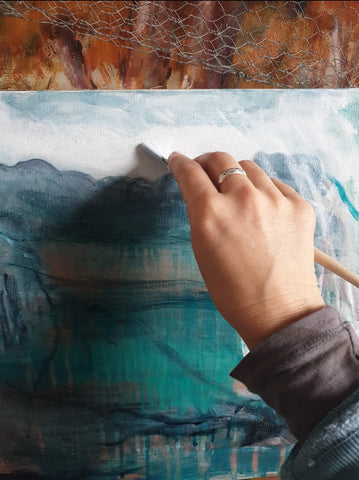The process of making an abstract painting may be more involved than you think…
I learnt traditional art from my Dad from a young age. As a kid and a teen I was always painting and drawing - landscapes, portraits, still life. This is a sketch I did of Jackson Pollock, who I greatly admire for his courage and experimental art techniques.

But it was abstraction that pulled at my heart strings.
It is sometimes assumed that abstract artists paint abstracts because they can’t paint or draw figurative work. So instead they just 'throw around some paint and call it art'. In most cases nothing could be further from the actual truth. Abstract art takes patience, thought, and a heck of a lot of practice. For many artists who have gone from traditional art to abstraction or semi-abstraction, it is a massive challenge. When you have a reference to draw directly from, it’s easy to see if and when you have it “right”. With abstraction or semi-abstraction it can be much more difficult to see where and why it is not working and what needs to be done to fix it.
My art practice has, like many artists', evolved over the years. These days I would describe most of my work as 'semi-abstract', meaning some figurative elements are included but they are stylised, or impressionistic.
My process:
I never know where each painting is going to take me. I usually start with some kind of plan, an idea, but like any good adventure, the plan falls by the wayside as the magic of the spontaneous happens.

The ground layer forms the basis for the work, and as I build more layers, the work starts to take shape. The idea evolves, something emerges. A few repeated marks here, some glazing there, scratching, scribbling, paring back, adding more. My ever striving need to use loose marks and strokes. I will sometimes use my non dominant hand or hold the paintbrush in a different way than is natural to me. Using my hands to apply medium plays a big part in my art practice.

I also use rags, a spray bottle, sandpaper sometimes, handmade brushes and handmade tools.

I usually take a photo at some point to see if it’s working.
“Blur” your eyes to see what’s needed. How’s the balance?
Turn the painting upside down. Step back. Look from another angle. Climb on a ladder and look down on it.
Leave it for a few days or weeks.
Then if you dare, go back into it and do some more. Or be even braver and call it finished.

